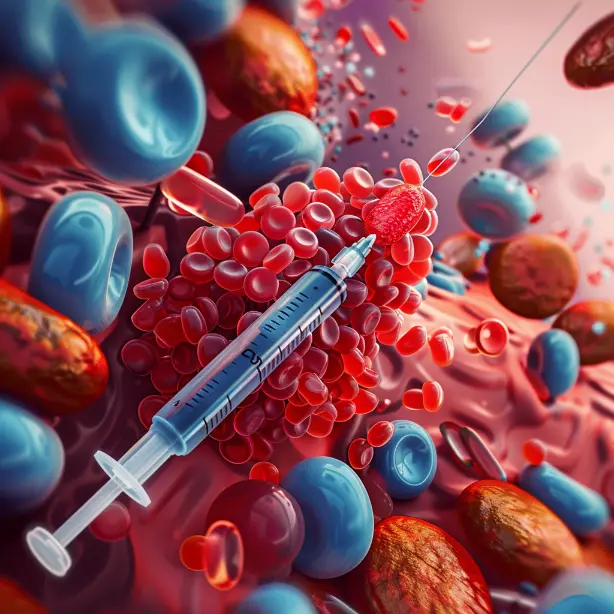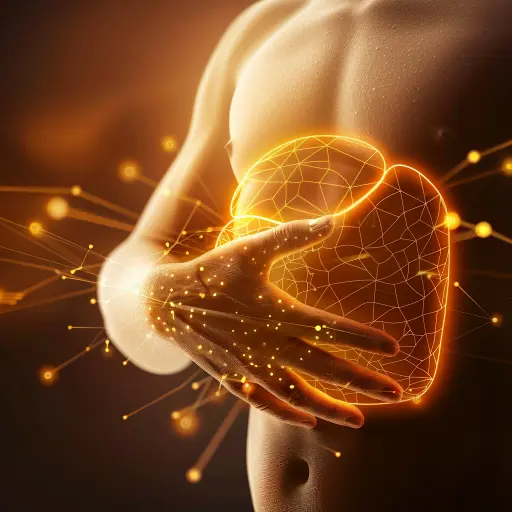The Interconnection Between Essential Nutrient Deficiencies – Compromised Liver Health- Insulin Resistance and Type II Diabetes
Insulin resistance and compromised liver health are critical health concerns with significant implications for human health. Both conditions are often interlinked and exacerbated by essential nutrient deficiencies.
Insulin resistance is a pathological condition where the body’s cells become less responsive to the hormone insulin, leading to elevated blood glucose levels. This condition is a precursor to type 2 diabetes mellitus (T2DM) and is associated with various metabolic disorders.
- Mechanism: Insulin binds to receptors on cell surfaces to facilitate glucose uptake. In insulin resistance, this signaling pathway is impaired.
- Consequences: Persistent hyperglycemia, increased risk of cardiovascular diseases, and progression to T2DM.
Compromised Liver Health and Nutrient Deficiencies
The liver plays a vital role in metabolism, detoxification, and nutrient storage. Essential nutrient deficiencies can severely compromise liver function, leading to a spectrum of liver diseases. Specific nutrients such as choline, inositol, taurine, and methionine are critical for liver health and metabolic processes.
- Choline: Essential for liver function, choline is involved in lipid metabolism and the prevention of fat accumulation in the liver.
- Inositol: Plays a role in fat metabolism and insulin signaling, helping to reduce liver fat and improve insulin sensitivity.
- Taurine: An amino acid that aids in bile salt formation, detoxification, and protection against oxidative stress.
- Methionine: A vital amino acid for methylation reactions and the synthesis of S-adenosylmethionine (SAMe), crucial for liver function and repair.
Insulin Resistance Closed Loop
The relationship between nutrient deficiencies- fat accumulation in the liver- insulin resistance and Type II Diabetes forms a closed loop, where each condition exacerbates the others.
- Essential Nutrient Deficiency: Deficiencies in choline, inositol, taurine, and methionine impair liver function, leading to fat accumulation and NAFLD.
- NAFLD: The accumulation of fat in the liver results in hepatic insulin resistance, disrupting glucose homeostasis.
- Insulin Resistance: Peripheral insulin resistance exacerbates hyperglycemia, leading to compensatory hyperinsulinemia and further fat accumulation in the liver.
- Type II Diabetes: Chronic insulin resistance progresses to Type II Diabetes, perpetuating a cycle of metabolic dysfunction and liver damage.

Implications on Human Health
The synergistic effects of insulin resistance, compromised liver health, and essential nutrient deficiencies have far-reaching implications on overall health like:
- Metabolic Syndrome: A cluster of conditions including insulin resistance, hypertension, dyslipidemia, and central obesity, increasing the risk of cardiovascular diseases.
- Cardiovascular Health: Elevated risk of atherosclerosis, coronary artery disease, and stroke due to persistent hyperglycemia and dyslipidemia.
- Liver Complications: Progression from NAFLD to non-alcoholic steatohepatitis (NASH), cirrhosis, and hepatocellular carcinoma.
- Systemic Inflammation: Chronic low-grade inflammation contributing to a range of disorders, including autoimmune diseases and cancer.
Addressing nutrient deficiencies, by supplementation of Choline, Taurine, Inositol, and Methionine all of them delivered by LiverGuard in HIGH DOSE contributes to liver health improvement and can destroy the insulin resistance close loop, leading to improvement of all related conditions and overall health.
References
- DeFronzo, R. A., Ferrannini, E., Zimmet, P., & Alberti, G. (2015). International Textbook of Diabetes Mellitus, 4th Ed. Wiley-Blackwell.
- Targher, G., Corey, K. E., Byrne, C. D., & Roden, M. (2021). The Complex Link between NAFLD and Type 2 Diabetes Mellitus — Mechanisms and Treatments. Nature Reviews Gastroenterology & Hepatology, 18(9), 599-612.
- Kawanaka, M., Nishino, K., Nakamura, J., Urata, N., & Oka, T. (2021). Nutrient Deficiencies in Patients with Non-Alcoholic Fatty Liver Disease. Clinical Nutrition ESPEN, 41, 249-256.
- Day, C. P. (2006). From Fat to Inflammation. Gastroenterology, 130(1), 207-210.
- Zeisel, S. H., & da Costa, K. A. (2009). Choline: An Essential Nutrient for Public Health. Nutrition Reviews, 67(11), 615-623.
- Beale, A., & Garcia-Perez, A. (2020). The Role of Inositol in the Treatment of Insulin Resistance. Clinical Therapeutics, 42(1), 63-72.
- Hayes, K. C., & Sturman, J. A. (1981). Taurine in Metabolism. Annual Review of Nutrition, 1, 401-425.
- Finkelstein, J. D. (1990). Methionine Metabolism in Mammals. The Journal of Nutrition, 120(8), 1474-1477.
















